Snake Plant Leaves Folding in Half
The primary wrongdoer behind the folding or curling of leaves in Snake Plants, along with mother-in-law’s tongue and different types, is frequently an infestation of thrips. These minuscule pests can negatively effect the health of the plant and cause numerous symptoms, along with leaf distortion.
Additionally, environmental factors play a giant position in the nicely-being of Snake Plants. If the plant is subjected to low mild situations, temperature strain, or dehydration, it is able to respond through folding or curling its leaves. Excessive publicity to daylight can also strain the plant, prompting it to show off this behavior.
Proper watering is vital in addressing these troubles. Overwatering or underwatering can each contribute to leaf curling. The plant may attempt to conserve moisture by folding its leaves if it senses a loss of water or if the soil is always too wet.
Furthermore, Snake Plants are vulnerable to pests and illnesses, and an infestation or fungal issues can lead to curling leaves. Insects, fungi, cold damage, and flawed watering practices are most of the elements that could compromise the plant’s health.
It’s important to assess the cultural situations of the plant, along with its water wishes, exposure to sunlight, and capacity pest troubles. Adjusting these elements and supplying suitable care can assist alleviate the strain at the plant and promote healthful boom, decreasing the likelihood of leaves folding or curling.
Snake plant leaves folding in half reddit
Hi! I apprehend your challenge about your snake plant’s leaves folding in half. Snake plant life, resilient as they’re, can exhibit diverse responses to environmental situations. Given that your plant remains indoors with indirect mild, this is a positive start. The reality that you have not watered for a month may be a giant clue.
From your description and online searches, the folding may be a end result of either underwatering or overwatering. Snake vegetation are pretty hardy however are sensitive to extremes in watering. The twisty leaves suggesting underneath watering and limp leaves indicating over watering and capability rot add a layer of complexity.
Considering the weather of your Caribbean island, the stability between these elements turns into vital. In my enjoy, I’ve discovered that snake vegetation have a tendency to fold their leaves whilst they are thirsty. However, it’s crucial now not to miss the possibility of overwatering, that could result in root rot.
Here’s a step-through-step method to troubleshoot: First, check out the roots to make sure they aren’t rotting, and the plant is not rootbound. Then, delve into the folds of the leaves – on occasion problems manifest in the ones hidden spaces.
Given the latest watering and relocation incident with two leaves folding in half of, it may be a response to modifications in its surroundings. Snake plants generally tend to fold whilst they’re thirsty, so make sure that it gets good enough moisture with out becoming waterlogged.
Lastly, examine the general condition of the leaves. If there are symptoms of colour alternate or uncommon markings, it would offer additional insights into the plant’s health. The arrival circumstance of the plant and its reaction for your care, inclusive of the dried guidelines and splits, could also indicate a need for careful attention.
Rattlesnake plant leaves folding in half
The curled leaves on my rattlesnake plant may be attributed to a couple of factors. First, the crispy brown edges serve as a clean signal of low humidity. To cope with this, it is advisable to cautiously cut off the affected quantities and introduce measures to boom the general humidity across the plant.
Moreover, the curling, spotting, and yellowing of the decrease leaves point towards under-watering. Inadequate moisture within the soil can result in these signs, and it’s important to hold a consistently wet environment for the plant. Remember to alter your watering ordinary as a consequence, making sure that the soil stays properly hydrated.
Understanding the balance among humidity and watering is fundamental to selling the fitness and properly-being of the rattlesnake plant. By addressing these elements, you could create an surest environment in your plant to thrive.
Will snake plant leaves uncurl
Certainly! If you word that the leaves of your snake plant are staying curled and reduced in size, it could be a sign of dehydration or diverse other underlying troubles. To deal with this difficulty, remember the subsequent comprehensive steps:
- Watering Schedule: Ensure you are following an appropriate watering time table. Snake flora are resilient and can tolerate rare watering. Water the plant each 2-4 weeks, allowing the soil to dry out among watering periods.
- Light Exposure: Provide your snake plant with shiny, oblique mild. Inadequate mild can lead to leaf curling. If a few leaves are bending even as others stay firm, it is able to indicate that the plant isn’t always receiving sufficient light. Adjust the location to make sure even mild publicity.
- Fertilization: Utilize fertilizer sparingly. Snake vegetation aren’t heavy feeders, and excessive fertilization can bring about curled leaves, brown hints, and average damage. Follow a balanced fertilization recurring to avoid nutrient overload.
- Temperature Control: Maintain a temperature variety among 55 to 85°F (13 to 29°C). Extreme temperatures can strain the plant and contribute to leaf curling. Ensure the plant is not uncovered to drafts or sudden temperature fluctuations.
- Replanting with Fresh Soil: If the leaves keep to stay curled, take into account replanting the snake plant using clean potting soil. This system facilitates refresh the soil and gives the plant with vital vitamins for wholesome growth.
- Soil pH Adjustment: Check and regulate the pH of the soil to a variety among five.Five to 7.5. Snake flowers select barely acidic to impartial soil conditions. Maintaining the proper pH level promotes top-quality nutrient absorption.
- Pest Management: Inspect the plant for pests, as they could make contributions to leaf problems. If pests are present, take suitable measures to put off them. Common pests encompass aphids, mealybugs, and spider mites, which could cause curled leaf edges.
- Dealing with Underwatering: If the leaves display signs and symptoms of dehydration, consisting of curled and wrinkled foliage with brown edges, recall adjusting your watering ordinary. Deeply soak the plant every time you water to ensure ok hydration.
- Reviving Shriveled Leaves: To revive shriveled leaves, soak the entire plant in a bowl of water for about 10 minutes. Ensure deep soaking throughout ordinary watering to save you similarly dehydration. If the soil is continually dry under the floor, bear in mind replacing it.
- Preventing Future Damage: Unfortunately, broken leaves might not recover absolutely. However, you could prevent destiny damage by addressing the identified troubles and preserving a regular care routine.
Remember that those steps are widespread guidelines, and the unique needs of your snake plant may additionally range. Observing the plant intently and adjusting care practices thus will make a contribution to its average fitness and nicely-being.
Snake plant leaves curling outward
Dehydration stands because the primary offender when snake plant leaves curl outward. This common trouble manifests thru curled, wrinkled foliage decorated with brown edges, signaling the plant’s determined need for hydration. To ascertain the plant’s thirst, a simple soil moisture test is so as. Insert your finger one to two inches into the topsoil; if it feels dry, it’s a clear indication that the snake plant is in want of watering.
Given the date of your inquiry on Jul 19, 2023, it’s important to directly address the dehydration problem to ensure the plant’s fitness and vitality. Regular tracking of soil moisture and regular watering primarily based on the located dryness will make contributions to the well-being of your snake plant, helping it thrive and hold its vibrant appearance. Remember, a proactive method to hydration is key to fostering a flourishing environment in your botanical associate.
FAQ’s on Snake Plant Leaves Folding in Half
Why are my snake plant leaves folding?
Dehydration is frequently the primary cause while snake plant leaves begin to fold. If you observe curled and wrinkled foliage with brown edges, it is a clean sign that your plant is in want of water. To verify, honestly insert your finger one to two inches into the topsoil. If it feels dry, watering your plant is recommended.
What causes snake plant leaves to split?
In maximum instances, if your Snake Plant leaves are split, you can beautify its aesthetic enchantment by means of both trimming away the broken phase or doing away with the entire leaf. If the leaf is simplest bent and not broken, you may gently straighten it. Alternatively, you may select to let the plant evidently heal itself.
Reason No. 1: Overwatering
Snake flora are local to arid regions, making them highly adaptable to dry situations. One of the primary causes of folded leaves is overwatering, a commonplace mistake made by way of nicely-intentioned plant proprietors.
Symptoms of Overwatering: When snake flowers obtain excess water, their roots end up waterlogged, main to root rot. This circumstance, if left unaddressed, can purpose the leaves to fold in half and come to be soft.
Solution:
- Allow the Soil to Dry: Check the moisture stage inside the soil frequently. Only water the plant when the top inch of the soil is dry.
- Adjust Watering Frequency: Snake plants thrive on forget about; reduce watering to once every 2-four weeks, relying on environmental conditions.
- Improve Drainage: Ensure the pot has drainage holes to save you water accumulation at the lowest.
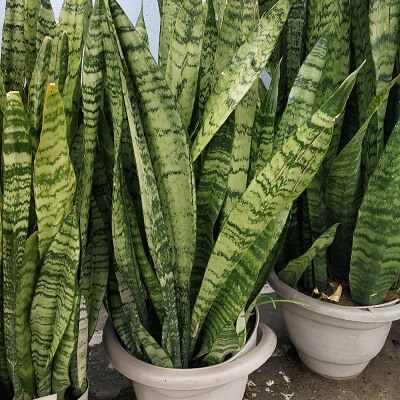
Reason No. 2: Underwatering
Conversely, underwatering also can lead to folded snake plant leaves. Despite their drought tolerance, these plant life do require regular watering.
Symptoms of Underwatering: Insufficient water reasons the leaves to wilt and fold because the plant conserves moisture.
Solution:
- Deep Watering: When watering, make certain that the water reaches the roots by means of supplying a thorough soak.
- Monitor Soil Moisture: Keep a watch on the soil moisture levels, and water when the top inch feels dry.
- Establish a Watering Schedule: Create a consistent watering time table to prevent extended dry periods.
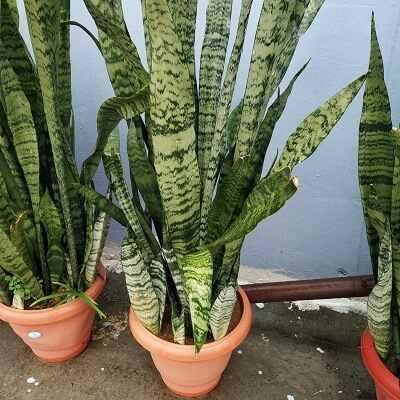
Ph tester for plant life We endorse – Check charge in .
Reason No. 3: Light Issues
Light performs a crucial position within the fitness of snake plant life. Both an excessive amount of and too little mild can make contributions to the folding of leaves.
Too Much Light
Snake flowers decide on brilliant, oblique light. Placing them in direct sunlight can result in leaf sizzling and, in the end, folding.
Symptoms of Excessive Light:
- Scorched Leaves: Direct daylight causes browning and sizzling.
- Folded Leaves: As a defense mechanism, leaves may additionally fold to guard themselves from excessive light.
Solution:
- Move to Indirect Light: Relocate the plant to a place with much less direct daylight.
- Provide Shade: If exterior, do not forget supplying shade at some point of the hottest parts of the day.
- Adjust Light Exposure: Find the proper stability of light publicity to save you sizzling.
Not Enough Light
While snake plants tolerate low light conditions, insufficient mild can result in pale, droopy leaves which could fold.
Symptoms of Insufficient Light:
- Pale Leaves: Lack of light can bring about diminished, dangerous-searching leaves.
- Droopy Appearance: Leaves may end up limp and stoop because of insufficient light.
Solution:
- Relocate to Brighter Area: Move the plant to a location with extra shiny, oblique light.
- Rotate the Plant: Regularly rotate the plant to ensure all facets obtain good enough mild.
- Consider Artificial Light: If natural light is constrained, supplement with grow lights.

Reason No. 4: Root Rot and Pests
Beyond watering and mild troubles, snake flowers can face specific problems that cause folded leaves, along with root rot and pest infestations.
Root Rot
Root rot is a fungal sickness that influences snake plant life while the roots grow to be compromised. This circumstance hinders water and nutrient uptake, ensuing in folded leaves.
Symptoms of Root Rot:
- Folded Leaves: Due to the lack of crucial vitamins reaching the leaves.
- Brown, Mushy Roots: A foul scent might also accompany rotting roots.
Solution:
- Diagnose and Treat: Take the plant to a nearby nursery for a proper diagnosis and treatment.
- Improve Drainage: Ensure well-draining soil and pots with enough drainage holes.
Pests
Various pests, which includes mealybugs, spider mites, and aphids, can attack snake plant life, causing the leaves to fold.
Symptoms of Pests:
- Presence of Insects: Visible pests on leaves or soil.
- Folded Leaves: Sucking bugs can cause leaves to fold as they sap the plant’s vitality.
Solution:
- Inspect Regularly: Check your snake plant regularly for signs of pests.
- Natural Remedies: Introduce natural predators or use organic pesticides.
- Isolate Infected Plants: If feasible, isolate inflamed vegetation to prevent the unfold of pests.
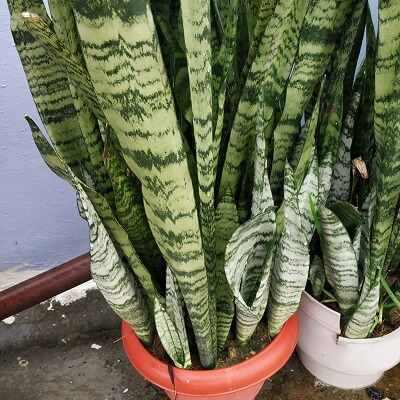
Reason No. 5: Mechanical Damage
Physical damage to the leaves also can result in folding. This can occur whilst the plant is bumped into objects or when leaves are tied too tightly.
Symptoms of Mechanical Damage:
- Visible Signs of Damage: Bruises, tears, or marks at the leaves.
- Folded Leaves: A protecting response to bodily stress.
Solution:
- Handle with Care: Be aware while moving or dealing with the plant to keep away from physical harm.
- Loosen Ties: If leaves are tied, ensure the bindings aren’t too tight.
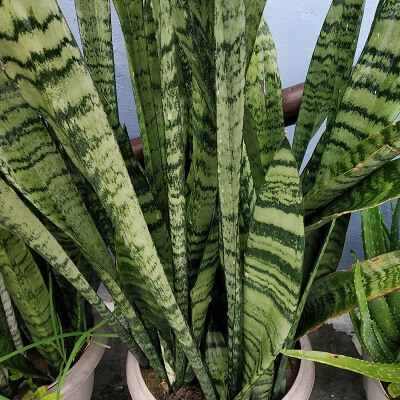
Reason No. 6 :Natural Aging
As snake plant life age, it is herbal for a few leaves to fold as a part of the plant’s life cycle.
Symptoms of Natural Aging:
- Folding Leaves: Older leaves certainly fold as they attain the stop in their life cycle.
- Replacement Growth: New leaves generally emerge to replace older ones.
Solution:
- Acceptance: Understand that a few leaf folding is a herbal part of the plant’s growing old process.
- Encourage New Growth: Provide proper care to inspire the growth of new, healthful leaves.
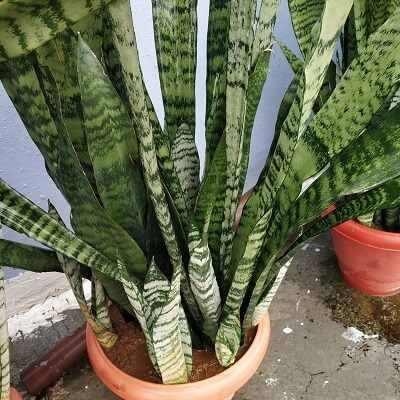
Also Read : Why Is My Snake Plant Dying?
Frequently Asked Questions (FAQs)
Why are my snake plant leaves folding in?
Snake plant leaves may additionally fold in due to overwatering, underwatering, insufficient mild, pests, mechanical harm, or herbal growing older. Identifying the particular cause is important for focused solutions.
Why are my snake plant leaves bending in half of?
Bending in half of can result from overwatering, underwatering, excessive or inadequate light, pests, bodily damage, or herbal getting older. Diagnosing the problem will guide suitable corrective measures.
Why are my plant leaves folding in half?
Plant leaves, such as snake vegetation, may fold in half because of elements such as unsuitable watering, light troubles, pests, harm, or the natural ageing manner. Understanding the basis cause is essential for powerful resolution.
What reasons snake plant leaves to split?
Snake plant leaves might also break up due to overwatering, inflicting mushiness, or underwatering, main to wilting. Other elements encompass pests, mechanical harm, or natural growing old. Identifying the motive is fundamental to preventing in addition splitting.
How often should snake plant be watered?
Snake plants pick infrequent watering. Allow the soil to dry out absolutely among watering classes. Adjust the frequency based on environmental elements, ensuring the soil is consistently dry an inch deep.
What does an underwatered snake plant look like?
An underwatered snake plant exhibits wilting and folding leaves. The leaves may additionally appear dry, and the plant universal looks dehydrated. Proper watering involves thorough soaking to repair turgidity.
How do you fix an overwatered snake plant?
To restore an overwatered snake plant, permit the soil to dry completely earlier than watering again. Check for root rot by using inspecting the roots. If gift, trim affected roots, repot in properly-draining soil, and regulate watering behavior.
How do you repair broken snake plant leaves?
Gently prune damaged snake plant leaves to maintain aesthetics. Promote restoration with the aid of making sure gold standard developing situations, along with appropriate mild, water, and soil situations.
How do you maintain snake plant leaves upright?
Maintain upright snake plant leaves through presenting balanced light and water situations. Regularly test for pests and illnesses, making sure the plant remains healthy and resilient.
Do snake plants need sun?
Snake flowers opt for vibrant, oblique mild. While they could tolerate low light conditions, direct daylight might also lead to sizzling. Find a location with shiny, indirect mild for most effective growth.
When ought to I repot my snake plant?
Repot your snake plant whilst it outgrows its modern-day box or becomes root-sure. Signs encompass roots circling the pot or rising from the drainage holes. Repot at some stage in the developing season for pleasant outcomes.
Snake plant leaves folding in half reddit
Explore Reddit threads discussing snake plant leaves folding to advantage insights from the community. Users may proportion reviews and numerous solutions for addressing this common trouble.
Rattlesnake plant leaves folding in 1/2
Investigate discussions particularly centered on rattlesnake flowers to understand variations in folding styles. Community insights can manual tailor-made care for special snake plant sorts.
Snake plant leaves curling outward
Outward curling of snake plant leaves might also indicate exposure to excessive light or environmental stress. Adjust the plant’s vicinity to offer appropriate light situations.
Indoor plant leaves curling inward
Inward curling of indoor plant leaves can end result from underwatering, low humidity, or pests. Ensure right watering and deal with environmental factors to repair leaf health.
Snake plant leaves curling and yellow
Curling and yellowing of snake plant leaves may sign overwatering, root troubles, or nutrient deficiencies. Evaluate soil moisture, root fitness, and do not forget fertilizing if needed.
Why are my snake plant leaves thin
Skinny snake plant leaves may be a sign of inadequate light. Move the plant to a brighter area to encourage more healthy leaf growth.
Snake plant leaves turning brown
Brown snake plant leaves might also indicate overwatering, underwatering, or exposure to direct daylight. Adjust watering conduct and relocate the plant to a suitable mild environment.
Snake plant leaves now not starting
Non-starting snake plant leaves can be because of different factors, along with insufficient mild, excessive moisture, or issues with the plant’s standard health. Address those factors for stepped forward leaf development.
In conclusion, expertise the reasons behind your snake plant’s leaves folding is vital for powerful care. By addressing particular problems such as overwatering, underwatering, light imbalances, root rot, pests, mechanical harm, and herbal growing older, you may ensure your snake plant thrives and remains a resilient and attractive addition on your indoor or outdoor space. Regular monitoring, thoughtful care, and timely interventions will contribute to the overall well-being of your loved one snake plant.
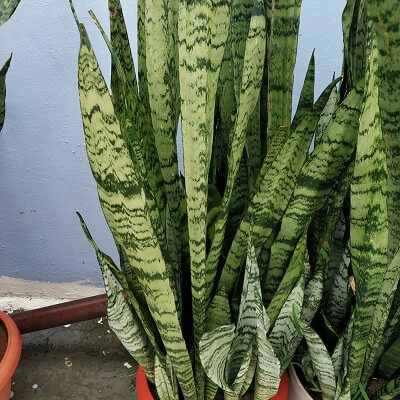
Online Discussions
Participating in on-line discussions, in particular on platforms like Reddit, provides a valuable possibility to faucet into a wealth of community-generated expertise.
Reddit Threads
a. Snake Plant Leaves Folding:
Exploring discussions targeted in particular on snake plant leaves folding opens up a trove of shared stories and diverse answers within the network. Users regularly recount their demanding situations, successes, and experiments in addressing this commonplace problem. This collective wisdom lets in plant owners to advantage insights into the different factors contributing to leaf folding and the effectiveness of various treatments.
b. Rattlesnake Plant Variations:
Investigating threads related to versions in rattlesnake plants gives a completely unique window into the world of various snake plant types. Community participants proportion observations on distinct traits, boom patterns, and care nuances for one-of-a-kind rattlesnake plant variations. This wealth of statistics facilitates plant owners tailor their care practices to the precise wishes in their rattlesnake plant, promoting best fitness and growth.
c. Leaf Curling Patterns:
Delving into discussions centered on leaf curling patterns gives a nuanced know-how of the numerous methods snake plant leaves may additionally fold. Users proportion pix, descriptions, and particular bills of specific folding styles. By deciphering those styles and correlating them with capacity reasons mentioned within the community, plant proprietors can better identify and deal with problems affecting their snake plant life.
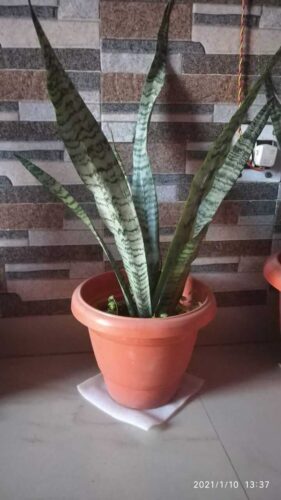
You can use any fertilizer that is nitrogen wealthy and it fulfills the needs of this plant. You also can attempt sluggish launch fertilizer that works step by step and slowly freeing the fertilizer into the soil.
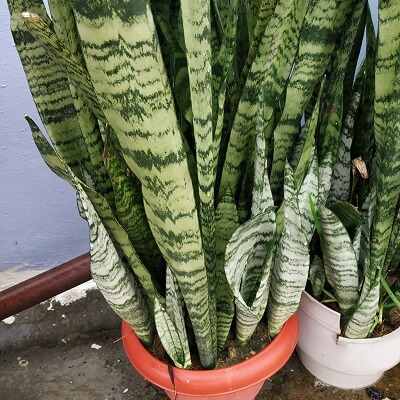
Buy Snake plant from ETSY(encouraged)
Similar Post:
Reference:
https://ucanr.Edu/blogs/blogcore/postdetail.Cfm?Postnum=27226
